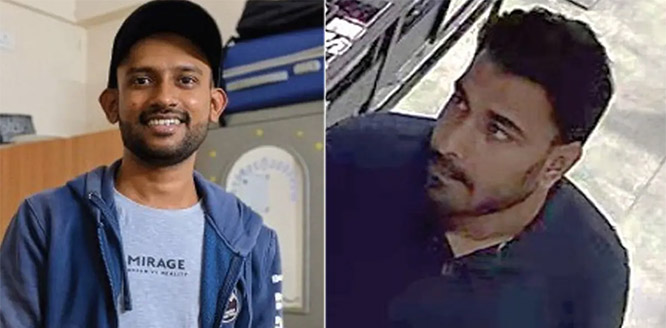Makkah, Aug 10: Haj pilgrims began flocking to Arafat in a peaceful manner on Saturday morning, reported the Saudi Press Agency, SPA.
Prince Abdulaziz bin Saud bin Naif bin Abdulaziz, Minister of Interior and Chairman of the Supreme Hajj Committee, and Prince Khalid Al-Faisal, Advisor to the Custodian of the two Holy Mosques, Governor of Makkah Region, and Chairman of the Central Haj Committee, followed the pilgrims to Arafat. They supervised the services for the pilgrims to perform Haj rituals smoothly and comfortably, said the SPA report.
" رذاذ الماء " يتطاير لتلطيف الأجواء في #عرفات. https://t.co/BmyDjUFkUi#العالم_في_قلب_المملكة #حج_1440 #واس_في_الحج #فيديو_واس #واس pic.twitter.com/fGrVBOTVMm
— واس (@spagov) August 10, 2019
More than 2.5 million Muslims began Haj on Friday in Saudi holy city of Makkah. The Haj consists of a series of religious rites which are completed over five days in Islam's holiest city and its surroundings in western Saudi Arabia.
"All of the arms of state have been deployed (and) we are proud to serve as 'God's hosts'," said security forces spokesman Bassam Attia.
#عرفات_الآن#العالم_في_قلب_المملكة#واس_في_الحج#فيديو_واس #حج1440 #واس pic.twitter.com/ORPdtHDyr0
— واس (@spagov) August 10, 2019
In total some 2.5 million faithful, the majority from abroad, are undertaking the pilgrimage this year, according to local media.
استبدال كسوة الكعبة المشرفة القديمة بكسوة جديدة.https://t.co/aqPyGzZoob#العالم_في_قلب_المملكة #حج1440 #واس_في_الحج#واس pic.twitter.com/NRogO5uq6Y
— واس (@spagov) August 10, 2019
"More than 1.8 million visas were delivered online without the need for middlemen. It's a success," said Haj ministry official Hatim bin Hassan Qadi.
جموع حجاج بيت الله الحرام تستقر على صعيد عرفات الطاهر، ليؤدوا ركن الحج الأعظم، ويشهدوا الوقفة الكبرى في مشهد إيماني مفعم بالخشوع والسكينة.#العالم_في_قلب_المملكة #واس_في_عرفات #واس pic.twitter.com/hrcG5DyqW0
— واس (@spagov) August 10, 2019
"We feel cleansed by achieving this pillar of Islam and meeting people from across the world. It's marvellous," said Mohamed Jaafar, a 40-year-old Egyptian pilgrim.
"It's an indescribable feeling. You have to live it to understand it," said an Algerian in his fifties completing the pilgrimage for the first time.
"It's a golden opportunity and moment," said his female companion.
During the pilgrimage separate streams of men and women, grouped by nationality, travelled to Mina on foot or in buses provided by the authorities.
A district of Makkah, Mina sits in a narrow valley surrounded by rocky mountains and is transformed each year into a vast encampment for pilgrims.
A total of "350,000 air-conditioned tents have been pitched," said a Saudi official.
Haj sermon
The millions of faithful will gather at Mount Arafat on Saturday (today) for a vigil to atone for their sins and seek God's forgiveness as Haj pilgrimage reaches its climax.
The Saudi General Presidency for the Affairs of the Grand Mosque and the Prophet's Mosque has said that sermon of Day of Arafat will be broadcast in six languages through FM radio. The sermon will be available on smartphone app as well as on the General Presidency website.
An official from the authority affirmed that the project - in its second year - witnessed a technical and organisational development since last year as it includes several technical means to enable users to benefit from translation in the holy sites with five radio frequencies.
After descending, they will gather pebbles and perform the symbolic "stoning of the devil".
That marks the beginning of Eid Al Adha, the festival of sacrifice, marked on Sunday. Pilgrims then return to the Grand Mosque to perform a final "tawaf" or walk around holy Kaaba.
What is the purpose of Haj?
The Haj is a pillar of Islam, required of all Muslims once in a lifetime. It is a physically demanding journey that offers a chance to wipe clean past sins and start anew before God. Pilgrims seek to deepen their faith on the Haj, with some women adopting the head covering known as the "hijab."
Despite the physical challenges, many people rely on canes or crutches and insist on walking the routes. Those who cannot afford the Haj are sometimes financed by charities or community leaders. Others save their entire lives to make the journey.
What is the history of the Haj?
While following a route the Prophet Muhammad (peace be upon him) once walked, Muslims trace the rites of Haj back to prophets Ibrahim and Ismail.
Muslims believe prophet Ibrahim's faith was tested when God commanded him to sacrifice his only son Ismail. Ibrahim was prepared to submit to the command, but then God stayed his hand, sparing his son.
Pilgrims also trace the path of prophet Ibrahim's wife, Hagar, who ran between two hills seven times searching for water for her dying son. Tradition holds that God then brought forth a spring that runs to this day.
Why is holy Kaaba so important?
Islamic tradition holds that the Kaaba was built by prophet Ibrahim and Ismail as a house of monotheistic worship thousands of years ago. Over the years, the Kaaba was reconstructed and attracted different kinds of pilgrims who once lived in the Arabian Peninsula. In pre-Islamic times, the Kaaba was used to house pagan idols worshipped by local tribes.
Muslims do not worship the Kaaba, but it is Islam's most sacred site because it represents the metaphorical house of God and the oneness of God in Islam. Observant Muslims around the world face towards the Kaaba during their five daily prayers.
What are the rituals performed during Haj?
Pilgrims enter into a state of spiritual purity known as "ihram" that is aimed at shedding symbols of materialism, giving up worldly pleasures and focusing on the inner self over outward appearance.
Women forgo makeup and perfume and wear loose-fitting clothing and a head covering, while men dress in seamless, white terrycloth garments. The white garments are forbidden to contain any stitching - a restriction meant to emphasise the equality of all Muslims and prevent wealthier pilgrims from differentiating themselves with more elaborate garments.
Muslims are forbidden from engaging in sexual intercourse, cutting their hair or trimming nails while in the state of ihram. It is also forbidden for pilgrims to argue, fight or lose their tempers during Haj. Inevitably, though, the massive crowds and physical exhaustion of the journey test pilgrims' patience and tolerance.
The first day of Haj
The Haj traditionally begins in holy city of Makkah, with a smaller "umrah" pilgrimage which can be performed year-round. To perform the umrah, Muslims circle holy Kaaba counter-clockwise seven times while reciting supplications to God, then walk between the two hills travelled by Hagar. Grand Mosque, the world's largest, encompasses the Kaaba and the two hills.
Before heading to holy city of Makkah, many pilgrims also visit holy city of Madinah, where the Prophet Muhammad (peace be upon him) is buried and where he built the first mosque.
The second day of Haj
After spending the night in the massive valley of Mina, the pilgrims head to Mount Arafat, some 20 kilometres east from Makkah, for the pinnacle of the pilgrimage.
Thousands will also scale a hill called Jabal Al Rahma, or Mountain of Mercy. It is here where the Prophet Muhammad (peace be upon him) delivered his final sermon, calling for equality among mankind and for Muslim unity. He reminded his followers of women's rights and that every Muslim life and property is sacred.
Around sunset, pilgrims head to an area called Muzdalifa, 9 kilometres west of Arafat.
Many walk, while others use buses. They spend the night there and pick up pebbles along the way that will be used in a symbolic stoning of the devil back in Mina, where Muslims believe the devil tried to talk Ibrahim out of submitting to God's will.
The final three days of Haj
The last three days of the Haj are marked by three events: a final circling of holy Kaaba, casting stones in Mina and removing the ihram. Men often shave their heads and women clip a lock of hair at the end in a sign of renewal.
The final days of Haj coincide with Eid Al Adha, or the festival of sacrifice, celebrated by Muslims around the world to commemorate Ibrahim's test of faith. During the three-day Eid, Muslims slaughter livestock and distribute the meat to the poor.
The Haj in numbers
17,000 civil defence employees and thousands of security personnel deployed
30,000 health practitioners have been prepped for medical treatment of pilgrims
5,600 hotels and apartment buildings with capacity of 2.7m are dedicated to pilgrims
4,000 cleaners, equipped?with 400 machines deployed to clean Grand Mosque
30 million Pilgrims the Kingdom hopes to welcome annually by 2030
96 million Pilgrims have performed Haj over the past 50 years.








Comments
Add new comment